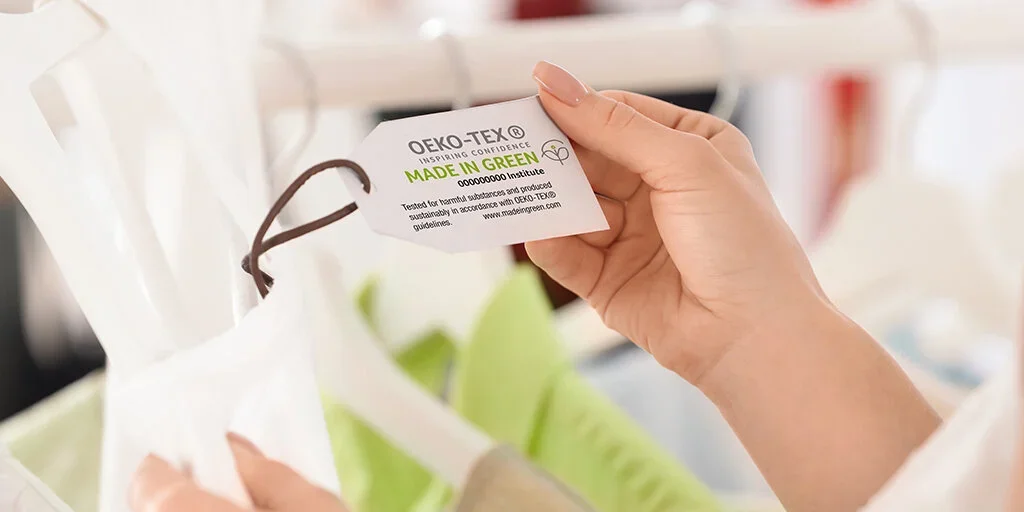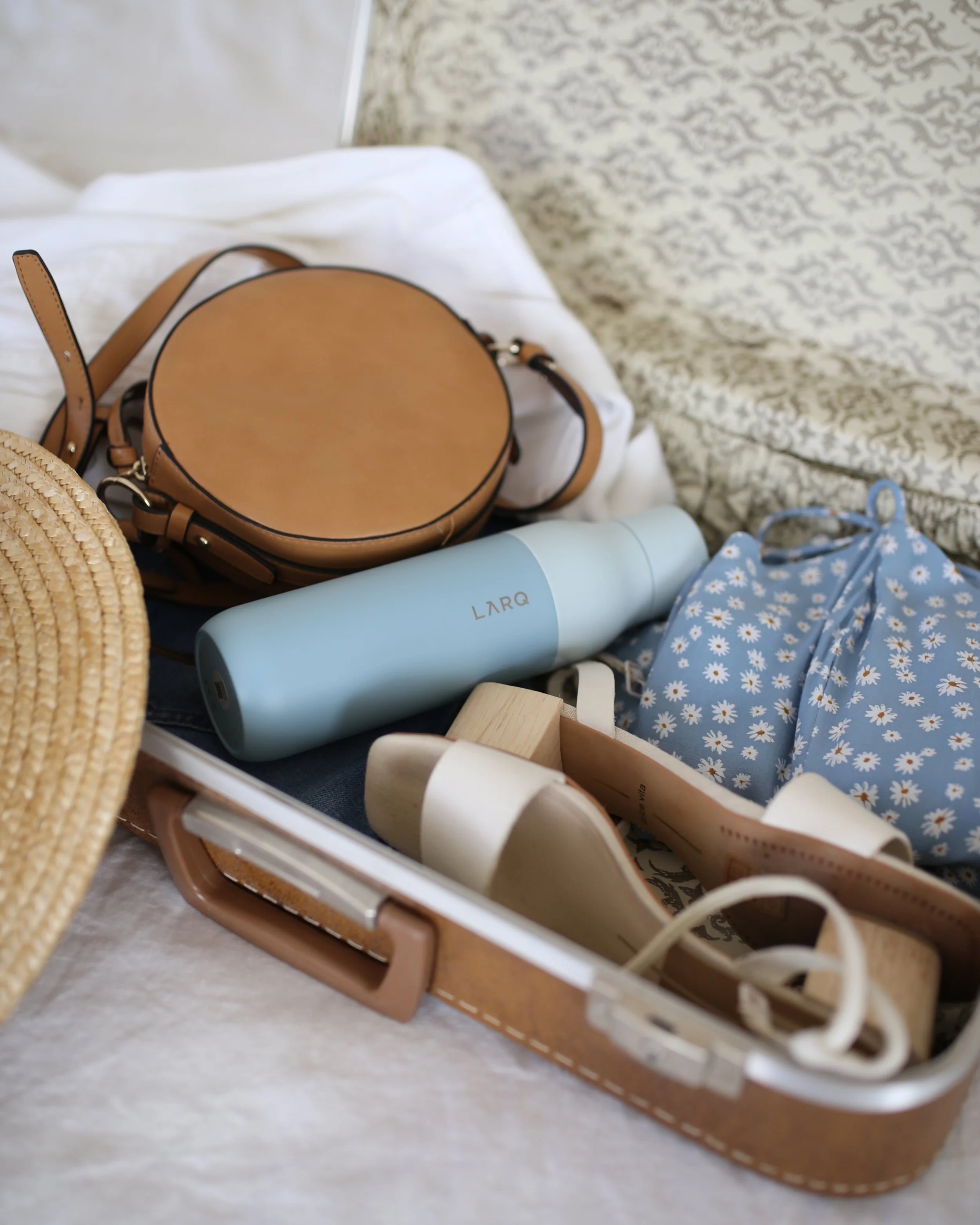The Digital Nomad's Guide to Sustainable Travel
Remote work, reliable internet, and accessible air transport have given rise to an entirely new kind of traveler: the digital nomad. Traversing the globe while you work from a laptop can be life-changing; however, this kind of travel can also increase your environmental footprint. Fortunately, being more mindful of how you travel—and why—can make all the difference.
Cultivating a Sustainable Travel Mindset
To travel more sustainably as a digital nomad, it’s important to first consider your goals and intentions. Remember: this is not your average vacation. Digital nomads travel for longer periods of time, typically spending weeks or even months in a particular location. If you’re not clear on why you’re engaging in this type of trip, it’ll be difficult to match your expectations with reality.
That’s why it’s important to ask yourself: what are you hoping to get out of the experience? For example, you might want to learn more about different cultures, or meet like-minded people. Understanding why you want to travel in this way is essential for guiding decisions about where you go, and why. Next, consider what kind of impact you want to have on the places you travel. Do you want to volunteer? Do you wish to support local businesses or artisans? If you haven’t thought about this question, take some time to do so.
Once you’ve thought about your goals as a digital nomad, you can make travel choices that align with those goals.
Minimizing Your Travel Footprint
Traveling by air is always going to be detrimental to the environment, so the best way to make your trip more sustainable, despite this, is to give back to the economies you’ll visit. Your money can go a long way in another country, so it’s important that you’re funding the right interests. In fact, the choices you make around where you stay, eat, and work can have considerable impact on local people, even after you’ve left.
Lodging
Spending a week at a locally-owned guest house can bolster the quality of life in the town you’re visiting, whereas staying in a US-based hotel chain can make it harder for the local economy to stay afloat. This is true for any type of travel, but it’s especially important as a digital nomad, because you’ll likely be spending more time (and more money) in a particular region. You might also search for lodging using sites designed specifically to foster sustainable travel, such as EcoBnb or Kind Traveler.
Work Trades
Work trades are a great way to support local economies as you travel. Websites like Workaway are specifically designed to connect travelers and hosts interested in a cultural exchange.
Typically, a work trade will pay for your room and board in exchange for a few hours of volunteering. Many travelers choose to work at touristic centers, like a hostel or a retreat, because they’re great places to connect with other travelers and engage with multicultural communities. You can also work at a farm, or stay with a family through WOOF (Worldwide Opportunities on Organic Farms).
Sometimes, you can contribute skills you already have (such as writing, design, coding, teaching yoga, cooking, or photography), or you might learn new skills, like farming or hospitality. Keep in mind that these places might not have a strong internet connection, so you can ask about this before you go. Or, think about going here between work stints or projects.
In addition to making your trip more sustainable, a work-trade allows you to learn new skills, meet new people, and have unique experiences that you never would’ve had on a typical vacation.
Restaurants & Coffee Shops
Similar to lodging, opting for a local restaurant instead of a chain can have a positive impact on local residents.
However, in certain places, you have to look a little harder to make sure that the restaurant is owned by an actual local, rather than an English-speaking expat. This is especially true in places like Bali, for example, where an increasing number of restaurants are Australian-owned, meaning that money is actually diverted from the local economy, rather than going back into it. Browsing Google reviews beforehand, or stopping by to check out the menu and vibe, can help you make that call.
Since you’ll be working, you have to think about more than just where to stay and what to eat. You also have to think about where you’ll work—and whether there will be a strong Wi-Fi connection, should you need it. Coffee shops are a go-to for digital nomads, so follow the same method for restaurants—you might even look up keywords like “wi-fi” or “work” to see if previous nomads have left some information to guide you. If possible, try to visit a coffee shop that grows coffee in that country, as this further supports local economies and can foster a positive impact on farmers and their workers.
Packing for Conscious Digital Nomads
Preparing for life as a digital nomad shouldn’t prompt you to go on a shopping spree and consume more; however, it’s a good opportunity to invest in high-quality, sustainable essentials that you’ll need anyway.
Luggage and Accessories
Some digital nomads travel with a backpacking pack, and that’s certainly a minimalist way to travel. The problem with this is that you’ll also need to bring a day pack when you’re setting out on adventures (and work days).
So if you need a little more space, and you’re looking to bring both a roller bag and a backpack, we love backpacks that are designed specifically for work travel. The Bee & Kin Nomad Backpack has a dedicated laptop sleeve that holds a 16’’ laptop, side pockets for bottles or accessories, and a phone pocket with a built-in charger. This makes it perfect for work and travel days, whether you’re at a coffee shop or the airport. Bee & Kin is a small batch company, meaning they don’t mass-produce their products, and they recycle excess materials from their factories to minimize environmental impact.
You can organize this bag with smaller containers, like the storage capsules from Cadence. These TSA-approved magnetic capsules are leak-proof and hold both wet and dry materials, making them great for carrying medicine, powders, hand lotion and more. They’re also made with post-consumer recycled material, and are durable enough to last for quite a long time.
Another must-bring digital nomad accessory is a set of reusable utensils. These are fairly easy to find, like this reusable bamboo set from Package Free. And at the low price of $10, you can avoid using plastic utensils at airports, restaurants, and wherever else you may find yourself as you wander.
Bath and body
It might seem like an afterthought, but the products you take with you on your trip can help reduce your travel footprint, too.
For example, buying a bunch of mini travel toiletries can create more waste, especially when you have to keep buying them. In contrast, reusable travel bottles can continue to be reused. The Kitsch Ultimate Travel set has a spray bottle, pump bottle, mini jars, and flat pouches, among other items, which you can easily refill with hotel soaps—or, better yet, toiletries from zero-waste shops. Kitsch products are made as sustainably as possible, with all of their products being either recyclable, reusable, biodegradable, or made from recycled materials.
This travel pack is also dishwasher safe, BPA free, and meets TSA carry-on requirements, making it perfect for travel. Packaging-free soaps and shampoos are another great option, and we love these solid bar options from Kitsch, which smell amazing, as well as these options from New Zealand-based company, Ethique.
Apparel
Packing the right clothes can ensure that you’re always prepared for whatever digital nomad life throws your way. We recommend opting for sustainable athleisure that’s also versatile, so you can repurpose it across many situations.
For example, Girlfriend Collective makes apparel from recycled water bottles, and it’s super soft and comfortable. Whether you’re hitting up a yoga class, lounging by the pool, or pairing with jean shorts for a night out, you can wear their Tommy Cropped Bra anytime. Their luxe legging is also perfect for plane days, work days, and everything in between. Another reason to love this brand: their ReGirlfriend program lets you send back and recycle worn Girlfriend products in exchange for a $15 credit.
Another digital nomad essential is a hat with sun protection, especially if you’re considering outdoor volunteering or adventure days. Colorado-based Wallaroo Hat Company is designed with an important mission—skin cancer education and prevention—and their line of Mexico hats are made from compostable palm fiber, meaning they can eventually be diverted from the landfill.
Traveling Sustainably, Long-Term
Digital nomad travel is different from an ordinary vacation not just because you’re working–but also because you’re spending much more time in a certain area. While this does invite room for greater negative impact, including more flights or more consumption, it also provides an opportunity to have a positive impact on the places you visit.
In other words, digital nomads have the chance to leave a destination even better than they found it. With this mindset, and a clear intention about why you’re traveling and how you’d like to help, digital nomading can be extremely rewarding both personally, and for the people and places you encounter.
About the Author
Michelle Polizzi is an independent writer and storyteller with 7 years of experience creating content online. Her writing has appeared in leading publications like Bitch, WELL+GOOD, Insider, and Healthline, and she covers topics like sustainable living, mental health, and intersectional feminism. Currently, she's pursuing an MFA in creative writing.
MAKE SURE TO PIN THE PHOTO BELOW TO SAVE THIS POST FOR LATER!
WANT TO FIND SUSTAINABLE BRANDS? VISIT OUR BRAND DIRECTORY!
Our Brand Directory is home to hundreds of sustainable brands, from makeup to cleaning supplies, from underwear to shoes. We have broken everything down by category for easy shopping, along with discount codes unique to Sustainably Chic viewers.


































